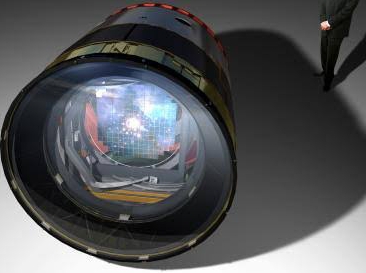The 3.2 billion pixel cameras are being used by space scientists to capture the largest photo ever. The space scientists planned to use an SUV-sized camera to take huge, sweeping pictures of the southern sky as part of something called LSST (Legacy Survey of Space and Time).The survey assists scientists to see the universe better than ever before and assists them to resolve astronomy’s big mysteries. The theories of dark, galaxies, and energy collide to bring the real visualization of the space with the help of a camera.
The practice shots have been snapped by the Stanford team before the cameras make its final move from Northern California to Chile’s Rubin. The 3200-megapixel photos of albeit terrestrial objects like ahead of romanesco are renowned as the largest single photos ever taken. A snap of the vegetable may not be renowned as an exciting development, but Vincent Riot, the camera of surveys made it a live national laboratory. This statement was made the first photos representative of an incredible step to a forward demonstration about the camera and its photographing space. Riot later said that ‘this is a huge milestone for us’. For LSST the focal place produces the images, so it’s the capable and sensitive eye of the Rubin Observatory.
The following points are give about their work –
The camera quality of the smartphones gives the different views in a well-designed camera. The conversion of electric signals through the emission of the light ray and reflects on the object captured by this well- designed camera. These signals translate the pieces of the photo to look together into exact pixel pieces of information. This camera has 189 individual light sensors and brings 16 megapixels of information. The power of this camera brings 1/189 up to 16 megapixels in total. The team grouped the sensors and called them science rafts. Each sensor weighs 20 pounds and is two feet tall and they are $3 million a piece.
Current results about the camera –
The construction of the camera was interrupted due to the covid 19 pandemic, the team has resumed the work and the further tests are going on in the lab.
The team tested the camera out on objects like romanesco, a well-known vegetable known for its fractal qualities. During the 19th century, the Frenchengraved the sky and a photo of Vera Rubin. Many astronomers influenced the chile observatory. These 3200-megapixel images are the largest, single-shot photos ever taken and require 400 4 K ultra-high defect TV screens to be displayed in full. In a single image, 12 megapixels can be captured through the phone camera.
Therefore in the upcoming days, the super-sensitive camera will be launched with different components like lenses, shutter, and fitter exchange system, so it’s ready to capture the night sky now. For the final testing in 2021 Chile had made the move to the slated camera. ‘The milestone will bring humanity closer than ever to understanding the place in the universe’ said JoAnne Hewett, SALC’s chief research officer and associate lab director for fundamental physics of the camera.

